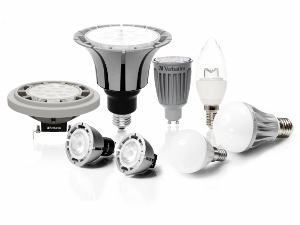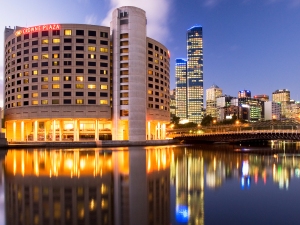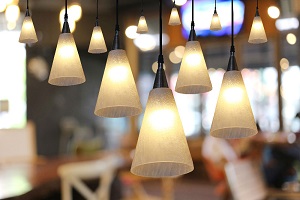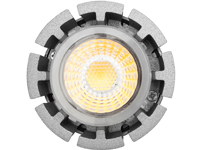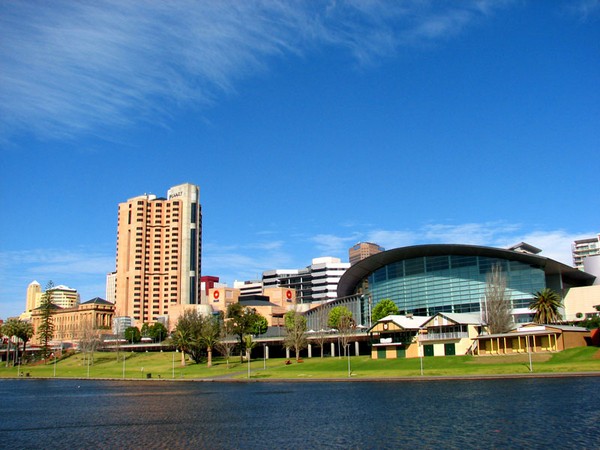Smart Solutions Cut Energy Costs
As the pressure to save energy and cut costs increases, accommodation owners and operators need to look for ways to better manage their energy use.
Smart energy solutions seem to be the only way forward as energy costs form the highest fixed cost for resort and hotel businesses. New technologies and guest room automation are coming to the rescue.
 Clipsal 5085 DLCRCP-K80Clipsal’s James Costello said integrating building systems for more efficient control of all facility operations would reduce energy use. He said key areas to analyse for energy savings were accommodation rooms, corridors, function meeting areas, pools and day spas, back of house administration areas, restaurants and car parks.
Clipsal 5085 DLCRCP-K80Clipsal’s James Costello said integrating building systems for more efficient control of all facility operations would reduce energy use. He said key areas to analyse for energy savings were accommodation rooms, corridors, function meeting areas, pools and day spas, back of house administration areas, restaurants and car parks.
Energy saving strategies include replacing lighting with energy efficient LED or compact fluorescents; tuning and optimising heating/cooling thermostat settings; installing occupancy sensors to switch off lighting; installing smart metering solutions to see where energy is being used; and centralising monitoring and control with time scheduling of services and events.
Hotels should integrate systems for synergy and provide a high-speed data connection to building and property management systems. He said emerging technologies in hotel rooms include the use of Zibee wireless control devices such as door locks, thermostats, lighting that can interact and communicate with other.
“Accommodation operators need to know where the energy is being consumed in the building and benchmark it against previous usage,” he said. “Metering and monitoring is a key to any ongoing energy reduction strategy. Typical energy savings between 10% and 30% can be achieved depending on the strategy implemented.
 Clipsal 5753 Series 2 Occupancy Sensor“Guests will be more comfortable, staff more efficient and the hotel more profitable but the guest experience should not be impacted by energy efficiency strategies within a hotel.”
Clipsal 5753 Series 2 Occupancy Sensor“Guests will be more comfortable, staff more efficient and the hotel more profitable but the guest experience should not be impacted by energy efficiency strategies within a hotel.”
Clipsal was established in 1920 and joined global energy management specialist Schneider Electric in 2003.
One successful Clipsal and Schneider hotel building integration projects was the Hilton Adelaide. Its conference rooms use Clipsal’s C-Bus 3600 multisensors to monitor occupancy and turn lights off 30 minutes after the last person leaves. The hotel’s building management system has a high level interface with the C-Bus lighting control system providing seamless communication. The synergy of both systems creates energy efficiency when scheduling function room bookings for HVAC and lighting requirements.
The touch screen located in each room allows for manual and automated control of lighting, messaging and blinds. The balcony function room’s blind control incorporates an automated C-Bus time schedule to minimise thermal transfer. C-Bus is also integrated with the door access control system. The C-Bus touch screen can unlock the automatically closing door to allow exit from the room.
Infrared remote controls in the conference rooms provide further flexibility and operability for clients. The remotes control lighting functions and implement moods according to the user’s requirements. This function is perfect for meetings or conferences, allowing the lights to be dimmed for presentations with minimal effort. The flexibility of C-Bus accommodates any configuration of the Grand Ballroom with local touch screen control when split and common control at each touch screen when joined via the room linking function.
Mr Costello said an energy efficiency and reduction strategy could assist with obtaining NABERS hotel rating.
mySmart CTI offers a range of smart solutions, from building management lighting and air conditioning control to standardised energy management systems. mySmart CTI can optimise both new and existing buildings and outdoor environments so they use less energy and resources while driving down ongoing operational costs.
 Clipsal 800The company’s solutions include: energy management including lighting control; access and security; HVAC control; alarm systems; external and street lighting; air handling; occupancy; hot water systems and audio.
Clipsal 800The company’s solutions include: energy management including lighting control; access and security; HVAC control; alarm systems; external and street lighting; air handling; occupancy; hot water systems and audio.
Its enGauge is a simple interactive behavioural change display that provides the energy usage and target information to engage the public in reducing their energy consumption. Designed for use in receptions, foyer, lift lobbies, shopping centres or public spaces, it displays current, historical and target energy, gas, water and waste usage in a fun, user-friendly and engaging way. Savings tips and client specific messages are displayed to encourage participation.
In addition to enGauge, Crowne Plaza Melbourne also uses in-room energy management solutions and digital thermostats provided by mySmart that enable automatic control of utilities including air conditioning when guests are away from their rooms. As part of the hotel’s wider energy-saving initiatives, these solutions have contributed to a saving of $50,000 in annual utility costs.
mySmart CTI was established in 2001 to support the hotel industry with energy saving hotel solution systems to help the environment and also contribute to financial savings in regards to operating and maintenance costs of the hotel and facilitate government requirement as well as reduce the impact of future global carbon constraints.
mySmart CTI offers a range of products to assist hotels manage their energy use, at the same time providing added guest amenities. These products offer flexibility, expandability and system integration. All solutions can work independently or can be interfaced with the property management system or building management system.
Vintech Systems offers a comprehensive range of in-room energy control switches that ensures only power within a guests room is operable when activated by a plastic card or electronic door key. Inserting a keycard into the energy control unit causes a photo-cell beam to be broken. This provides the distributor board (relay) with the signal to provide power to the lights and other connected electricity consumer such as television, heating and air-conditioning.
As there are no moving parts there is no wear and tear on the unit, ensuring maximum longevity.
Vintech Enoka Smart ECUOnce the card is removed is causes the electrical supply to be automatically cut off after a 30-second time delay. Vintech’s iSwitch Intelligent Energy Saver reads the information on the room card to ensure that it’s a valid card of the specific property operating the power within the room. After removing the card from the unit, about 10 seconds of courtesy timing operates, allowing the guest to leave the room.
By using an intelligent energy saver you ensure that only the guest room cards you supply to your guests are used in the locks.
Smart Hotel Solutions managing director Doron Danon says occupancy-based guestroom energy management systems have replaced keycards.
EMS uses sensors in its Energy Eye System to accurately detect the presence of the guest in the room actively track their behaviour and control guestroom electricity waste and the resulting expenditures without their participation.
“EMS control of the heating or air conditioning system actually improves the guest experience by maintaining room temperatures at a comfortable, albeit energy saving level while rooms are reported as being unoccupied,” he said. “With the cost of electronic components decreasing, this is no longer something only for the highest rate rooms.
“The Energy Eye System has taken this one step further by developing their system into a wireless platform that allows it to be easily installed as a retrofit into virtually any existing application. It is very easy and quick to install and it literally takes us 25 minutes per room, so hotels do not need to put rooms out of order and hence not lose additional revenue.
“Wireless installation brings total costs down and creates the recipe for rapid return on investment. By actively controlling the room temperatures without asking the guest to participate significant savings have been achieved over and above those seen by simple mechanical keycard type systems.”
The Energy Eye system made up of a wireless door sensor and wireless motion sensor that detects when a room is occupied and controls the air conditioner.
Mr Danon said the Energy Eye system can be used with any HVAC system and there are wireless sensors for balcony doors to switch off the HVAC if these doors are left open.
He said the typical cost of the system fully installed is about $450-$500 per room.

AccomNews is not affiliated with any government agency, body or political party. We are an independently owned, family-operated magazine.

